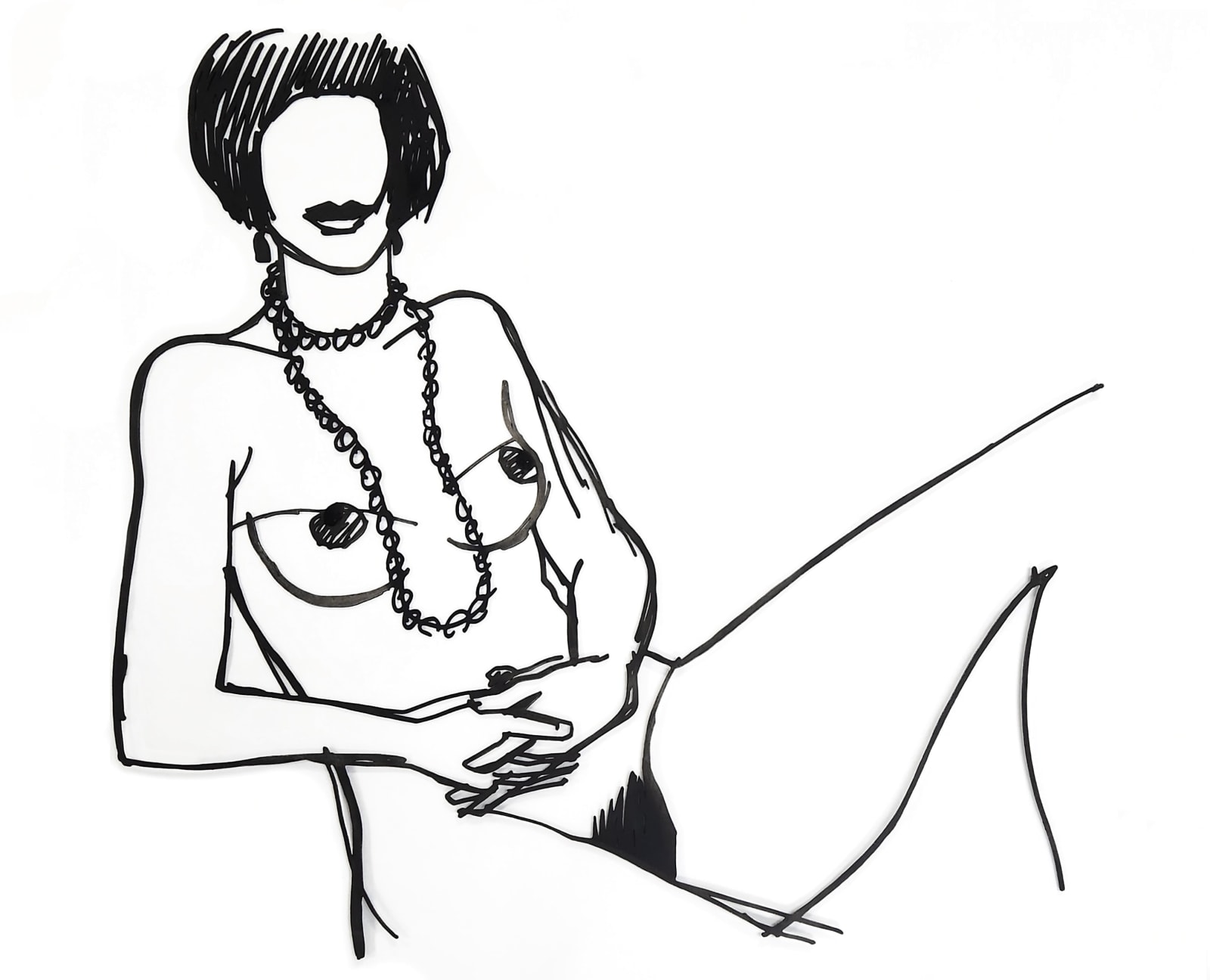Tom Wesselmann American, 1931-2004
86.4 x 91.4 cm
In 1983, an idea came to Tom Wesselmann: to capture the messy, unconstrained process of sketching in the unforgiving permanence of steel, a contradiction that seemed to intrigue the artist. His first steel works were hand-cut aluminum painted in colors, creating a flattened effect as if Wesselmann had drawn on a wall.
The following year, Wesselmann partnered with Donald and Alfred Lippincott in Connecticut to further develop his technique and gain more precision and specificity to cut the steel exactly as he wanted. Wesselmann had always been interested in technology, incorporating live televisions or radios into his assemblage works, and now he incorporated laser cutting into his steelworks. He was delighted, remarking: "I anticipated how exciting it would be for me to get a drawing back in steel. I could hold it in my hands. I could pick it up by the lines, off the paper. It was so exciting. It was like suddenly I was a whole new artist.”
By 1985, Wesselmann told the New York Times that he'd just had the best year of his life, energized by the new processes he had developed with the Lippincotts. The laser cutting specifically allowed him to magnify his drawings to a monumental scale while retaining their unstudied feel - the present work feels as light as air.
The excitement over the sculptures caused Wesselmann to focus more on drawing: they were now the final product instead of preparations for a painting or other work. He chose his drawings to transform into steel carefully, selecting options that had "the right look and feel…they can’t be tampered with…they have to be drawn in one dash.”
The Whitney acquired a steel-cut enamel the same year, but the hybridity of this new technique led to some confusion. Wesselmann considered his steel cuts pure drawings and labelled them as such (the Whitney now classifies it as sculpture, but it is referred to as a 'steel drawing'.)
Wesselmann's response? He explained that it was “an example of life not necessarily being as simple as one might wish." He added: “I trust that in the long run wisdom will prevail and what it is will not matter. What matters, of course, is it is beautiful, a vivid expression of a valid idea, presented in a specific form that really has never been seen before.”
Provenance
Westwood GalleryPrivate NY collection













